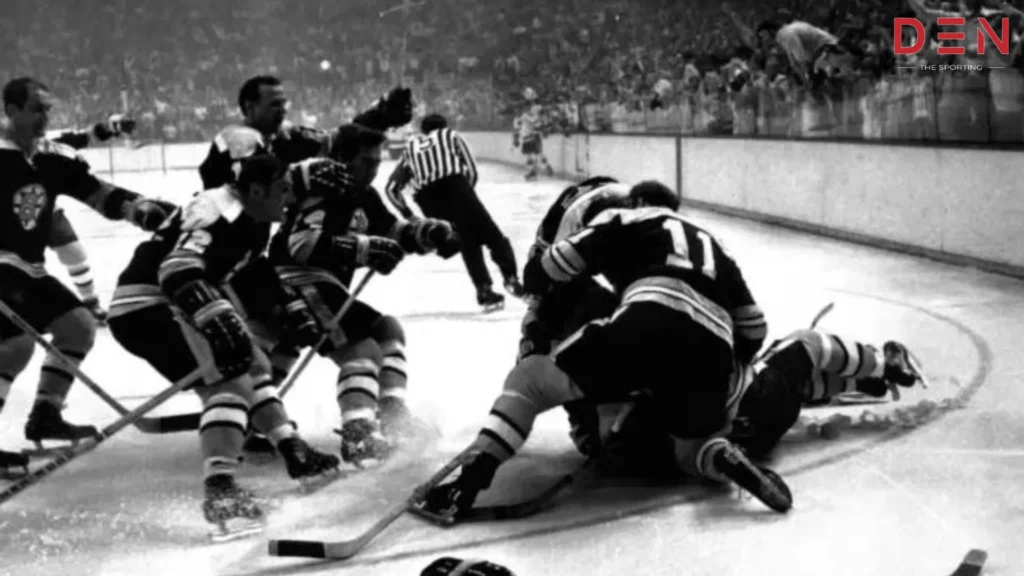
The National Hockey League (NHL) jersey is more than just a piece of clothing; it’s a symbol of team pride, a canvas for tradition, and a reflection of the ever-changing landscape of sports fashion. From the basic wool sweaters of the early days to the high-performance, moisture-wicking fabrics of today, the NHL jersey has undergone a remarkable evolution. Let’s lace up our skates and take a journey through The Evolution of NHL Jerseys.
Early Days: Simplicity Reigns Supreme (1917-1940s)
The NHL’s inaugural season in 1917 saw teams sporting a variety of basic designs. The Evolution of NHL Jerseys were primarily constructed from thick wool, offering little in the way of comfort or breathability. Colors were often limited, with red, blue, white, and black dominating the league. Interestingly, there wasn’t a strong emphasis on contrasting colors, which sometimes led to confusion for spectators, especially during the black and white television era.
The Evolution of NHL Jerseys: Standardization and the Rise of Color (1940s-1960s)
As the NHL matured, a need for standardization arose. In the 1940s, the league mandated contrasting colors to enhance viewership on the newly emerging television broadcasts. This period also witnessed a gradual shift towards incorporating team logos and names onto jerseys. The Montreal Canadiens, for instance, proudly displayed their iconic “CH” logo for the first time in 1956.
Suggested Read: Memorable NHL Rivalries: A Collision of Passion and Pucks
Expansion and a Kaleidoscope of Colors (1960s-1990s)
The 1960s marked a pivotal juncture for the NHL as the league underwent expansion, welcoming a wave of fresh franchises, each striving to carve out its own distinctive niche. This period heralded a lively burst of color, exemplified by teams such as the Philadelphia Flyers (donning orange and black) and the Los Angeles Kings (adorned in purple and gold), introducing previously unexplored color schemes. Furthermore, the adoption of stripes and patterns surged, contributing to the creation of visually unique jerseys.
Technological Advancements and the Reebok Era (1990s-2000s)
The 1990s witnessed a significant shift in jersey design philosophy. Traditional wool gave way to lighter, more breathable fabrics like polyester. Sublimation printing, a technique that allowed for intricate designs and logos, became the new standard. This era also saw the introduction of away jerseys with bolder colors and patterns, further differentiating teams on the ice. Reebok took over as the official jersey supplier in 1995, introducing the “NHL Shield” patch, a now-iconic symbol of the league.
The Evolution of NHL Jerseys: The Age of Performance and the Adidas Era (2000s-Present)
The onset of the new millennium brought about a heightened emphasis on performance-oriented sportswear. Jerseys evolved to be even lighter and more adept at wicking away moisture, placing a premium on player comfort and agility. Corporations such as Adidas, assuming control from Reebok in 2016, pioneered proprietary technologies centered on regulating temperature and managing sweat. Additionally, this era witnessed a resurgence of enthusiasm for vintage aesthetics, as teams unveiled “retro” jerseys that honored their storied histories.
Suggested Read: Top 10 NHL Players of All Time: Legends Etched in Ice
Looking Ahead: Embracing Technology and Fan Engagement
The future of NHL jerseys is likely to embrace new technologies. We might see the incorporation of smart fabrics that monitor player vitals or jerseys that interact with augmented reality experiences for fans. Customization may also play a bigger role, with fans having the ability to personalize their jerseys with player names or even their own designs. Social media and digital platforms will undoubtedly continue to play a significant role in connecting fans with their favorite teams and jerseys.
FAQs
Early NHL jerseys were a far cry from the sleek, high-performance gear of today. Made from thick wool, they were more like sweaters than athletic wear. Designs were simple, with basic colors and few embellishments. Numbers were often sewn directly onto the chest, and logos were rare.
Early designs were basic, but over time, jerseys became more colorful and incorporated more design elements. Teams added stripes, logos, and player names on the backs. The rise of television in the 1950s influenced jersey design, with the need for contrasting colors to distinguish teams on black and white broadcasts. Today, some teams have multiple jerseys, including special edition “alternate” jerseys.
Websites: The (unofficial) NHL Uniform Database (https://www.nhluniforms.com/) offers a comprehensive look at team jerseys throughout history.
Summing It Up
The Evolution of NHL Jerseys is a fascinating story that reflects the changing times. From the basic wool sweaters of the early days to the high-tech fabrics of today, jerseys have become an integral part of the NHL experience, not just for players but also for fans. As the league continues to evolve, one thing remains certain: the NHL jersey will continue to be a cherished symbol of hockey tradition and innovation.




